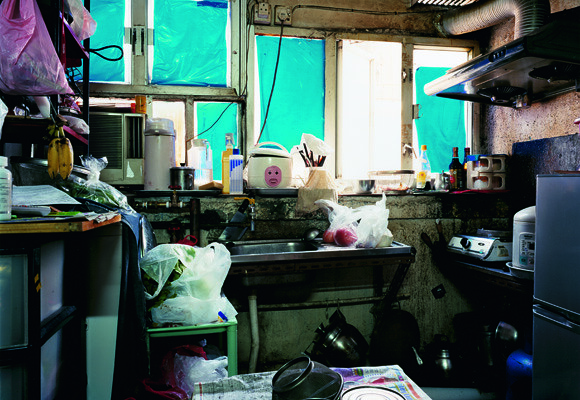Hong Kong's Rooftop Villages
A city is built in many layers. Layers in the temporal sense, but also in layers in the physical sense. The two often go hand in hand. A new area brings a new layer, a new style develops a new typology or new technology allows for a change in usage.
In addition to time more factor can influence the type and number of layers. With more and more people living in cities, the density and pressure in certain areas can be one such factor. Unplanned or ilegal settlements can form spontaneously at different fringe locations. However even in innercity locations, if there is room.
In dense inner city locations however, very seldom one finds an unused spot, at least not on street level, but maybe on roof tops.
Image by Wu/Canham taken from "portrait fro Above' / A view onto a rooftop village from across the road. The building dates from 1958 and is a Cantonese-style shophouse.
A new Peperoni Books publication with the title 'Portraits from Above: Hong Kong's Informal Rooftop Communities' by Rufina Wu and Stefan Canham portraits and documents a series of roof top communities in Hong Kong. The authors work with photographs, drawings and personal stories to tell the story of little villages that exist in the density of an urban mega city, hidden away in the sky.
At least they used to be far away from the streets, hidden on the flat roof of a fifties building, plugging into its infrastructure. Nowadays high rise buildings overshadow these roof tops by far and investment and land speculation threatens there base layer, the original building.
Image by Wu/Canham taken from "portrait fro Above' / A view onto a rooftop village from across the road. Six staircases provide access to this 8 story building that hosts another three stories on the roof.
Wu and Canham provide insight into a very personal documentation of these villages. Very soon it becomes cear that these are actually a lot more than just slums. These houses or units are tiny and improvised, not in very good condition, uncomfortable, but they are homes. Almost all of them are carefully decorated and organised, as far as this is possible.
The documentation uses the three different methods, drawing, photographs and textual description, very cleverly and manages to put together a good, at times almost too clean, picture of these small communities. Each technique can develop its very own angle and helps to shape a very particular whole. For example the drawing, in architectural terms and very dominant in this publication, a acclaimed objective, clean and clear method to represent the ultimate truth. Being used in this context of improvised housing is at first glance a farce, develops however, in cooperation with the other elements of the photographs and the texts a very specific role and can play to its strength. Similar the photographs, because it is used alongside the drawing, the photograph can focus on the documentation of the in between, the mess, the colour, the lighting, the style and the vibrancy of the place. The introductory text that portraits in a few sentences the owner or tenant of each place documented, provides the clues and the hints to piece together a narrative and spin a story between the different elements of the documentation.
Image by Wu/Canham taken from "portrait fro Above' / A living unit documented as a drawing showing the interior and some of the context. Forms part of the previous roof top landscape.
It is a publication with relatively little text and for one this is a good thing. There is however, a longer essay on the topic of roof top village and informal housing in Hong Kong by Dr Ernest Chui, is placed at the end of the book and provides a good context for the wholes story.
The design of the book is as simple, clear and effective as the methods used. The slightly gray paper used fits nicely with the black line drawings and the black and white photographs. It even works well with the few colour photographs.
Image by Wu/Canham taken from "portrait fro Above' / Same livign unit as before. Here a view into the kitchen living room part.
The project won an award at the 5th International Bauhaus Award in 2008 and is now available as a book. It documents an urban world that is reality to many people in urban areas, the hard reality of finding a place to stay, making it a home with very little. The book also documents the multiplicity of the city and fits in well with other publications such as Pet Architecture Guide Book
or Made in Tokyo: Guide Book
In this sense it is a beautiful book for every library or tea tabel not only for architects, but also for everyone else with an interest in the city.
Canham, S. & Wu, R., 2009. Portraits from Above: Hong Kong's Informal Rooftop Communities, Peperoni Books.





